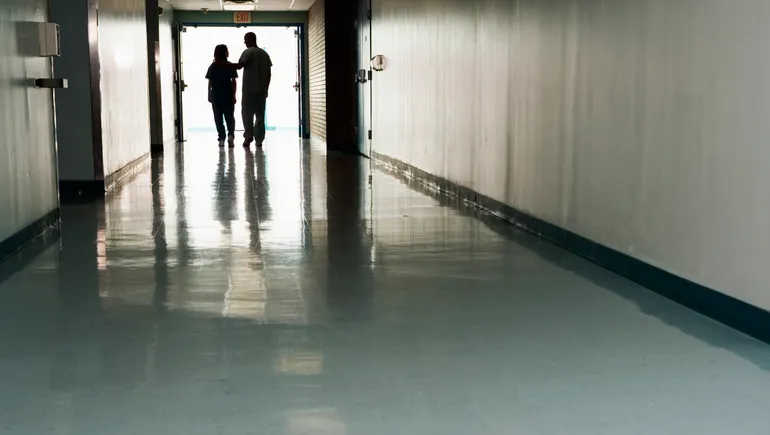Dive Brief:
Residents of bankrupt long-term healthcare facilities are more likely to suffer adverse care outcomes, according to a new working paper released this week.
Researchers found patients were more likely to be hospitalized 90 days after admission, report the use of physical restraints from staff and suffer bedsores than residents in non-bankrupt facilities.
The uptick in patient harm is in part attributable to increased staff turnover following bankruptcy filings, according to the report. In the year that follows a bankruptcy, weekly worker separations shot up 10% relative to control facilities, leaving less tenured staff responsible for patient care.
Dive Insight:
The report comes amid growing concern about the impact of provider bankruptcies on patient care, as health systems increasingly shoulder unsustainable levels of debt, forcing restructurings.
The team chose to focus on the long-term care industry due to its size, the vulnerability of patients seeking care and its reliance on public financing through Medicare and Medicaid. Senior care also drives a significant portion of Chapter 11 bankruptcy filings nationwide, accounting for almost one-fourth of filings between 2019 and 2024, according to a January report from the Gibbons Advisors.
Researchers analyzed the impact of nursing home bankruptcies between 2010 and early 2020, identifying 180 chain bankruptcies which include 727 facilities.
While the vast majority of bankrupt facilities included in the team’s sample continued to operate through their restructuring, the teams said care declined.
Patients’ risk of hospitalization rose by 1.4 percentage points compared to those at non-bankrupt facilities, which researchers said represented “major harms to patient health.” The use of physical restraints and bedsores likewise increased by 77% and 14% of the mean, respectively.
“It is important to emphasize that the increased use of physical restraints—such as using ties, belts, straps, rails, or other equipment to limit residents’ movement or access to their own body—is alarming,” wrote the authors. “Many patient advocates, clinicians, and researchers argue that restraints are a form of abuse, as they are rarely in the interest of the patient and are primarily used for the convenience of inexperienced, incompetent, or overburdened staff. CMS shares this view and penalizes the use of restraints in their quality rating system for nursing homes.”
The study also found an elevated use of catheters at bankrupt facilities, which researchers said implies an attempt to avoid helping patients use the toilet.
Some of these adverse outcomes could be attributable to a lack of adequate staff rather than intentional neglect.
While bankrupt facilities were generally able to hire new workers, they lose facility-specific knowledge and expertise.
The team made several recommendations to increase oversight of nursing home to ward off harms during a bankruptcy proceeding, noting regulators should monitor all bankruptcies closely — not just liquidations and closures. Researchers also advocated for setting debt financing limits to reduce the number of long-term care facilities that are forced to restructure at all.


